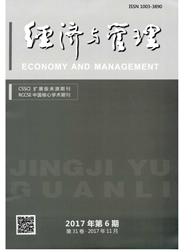

 中文摘要:
中文摘要:
通过区域间投入产出模型测算全国30个省市的产业转移态势,发现京津及东南沿海地区是主要的产业转出地,中部、西北和东北地区是主要的产业转入地,不同产业的转移态势不尽相同。运用基于FAHP和CRITIC法组合赋权的灰色关联投影模型,结合GIS空间分析方法,定量评价长江经济带中上游地区83个城市的产业转移绿色承接能力。结果表明:各城市承接产业转移的综合能力和分模块能力差异显著,省会城市、沿江城市及中游城市具有更强的产业转移绿色承接能力;2004—2014年中上游城市产业转移绿色承接能力普遍增强,不均衡状况有所改善。在因地制宜制定产业转移承接规划的基础上,促进长江经济带中上游地区基础设施共享建设和承接产业转移平台建设,创新产业转移方式,实现长江经济带产业的分梯度、有序转移。
 英文摘要:
英文摘要:
Through the regional input-output model, the industrial transfer situation of 30 provinces and cities in China was calculated, it is found that Beijing-Tianjin and the southeast coast are the main industries export, the central, northwestern and northeastern regions are major industries import, different industries have different transitions. Based on the gray relation projection model weighted by the combination of FAHP and CRITIC methods, GIS analysis is used to evaluate green undertaking capacity of the industrial transfer of 83 cities in the upper and middle reaches of the Yangtze River economic zone. The results show that comprehensive ability and divide modules ability of cities accepting the industry transfer have significant difference, and the provincial capital cities, the cities along the river as well as the middle reaches of cities have a stronger the green undertaking capacity of industrial transfer. From 2004 to 2014, the green undertaking capacity of industrial transfer of the upper and middle reaches of cities were overall enhanced and the imbalance had improved. On the basis of local conditions, the planning of industrial transfer absorption should be established, we should promote the construction of infrastructure sharing and the construction of industrial transfer platforms in the upper and middle reaches of Yangtze River economic zone, innovate industrial transfer mode. The sub-gradient and orderly industry transfer of the Yangtze River economic zone are realized.
 同期刊论文项目
同期刊论文项目
 同项目期刊论文
同项目期刊论文
 期刊信息
期刊信息
